Abstract
The immunological responses of rabbits to HSA, HGG or BSA were tested at various times later in animals which had received the corresponding antigens before or shortly after birth. As judged by the criterion of failure to show immune elimination of antigen, a high proportion of the rabbits remained unresponsive at times when it was calculated that all the originally administered antigen would have been eliminated from the circulation. Furthermore, removal of antigen by passively administered antibody failed to restore the capacity to respond. It is concluded that, in respect of the antigens used, their persistence in the extracellular body fluids is not a prerequisite for maintenance of immunological unresponsiveness.
Further administration of the same antigen to rabbits which had escaped from a state of specific immunological unresponsiveness generally produced a very weak response, and in a few instances resulted in a return to the unresponsive state.
When the cross-reacting antigens HSA and BSA were administered adsorbed on alum to rabbits made unresponsive by neonatal contact with BSA and HSA respectively, and at the same time a further dose of the original antigen was given, antibodies were formed which were specific for the second antigen and did not cross-react with the first. In only 1/9 animals was responsiveness to the first antigen restored. The significance of these results is discussed.
Full text
PDF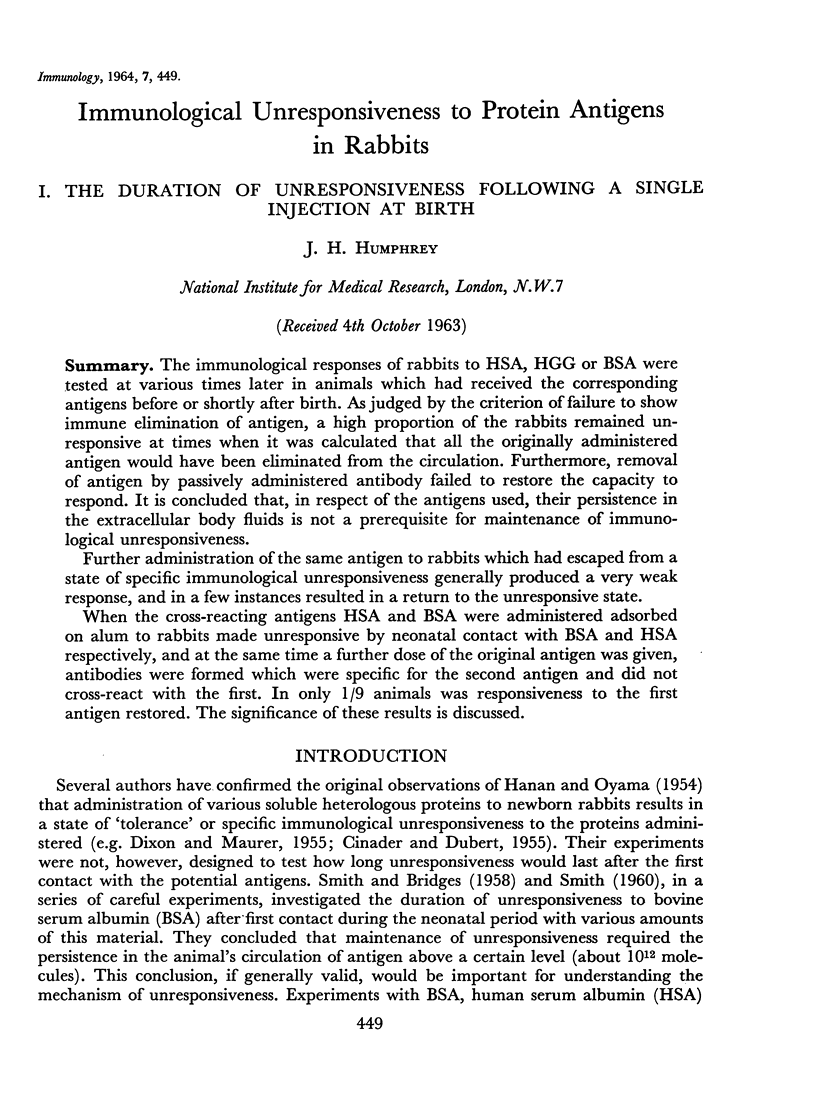
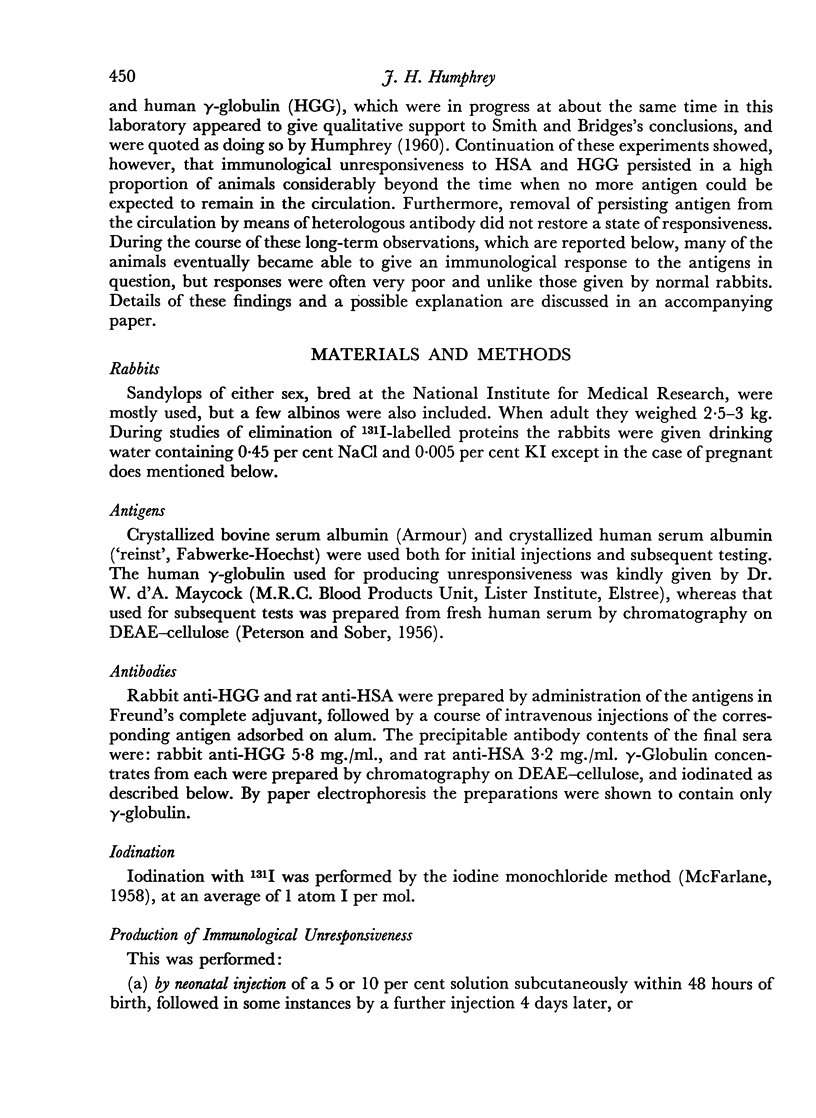
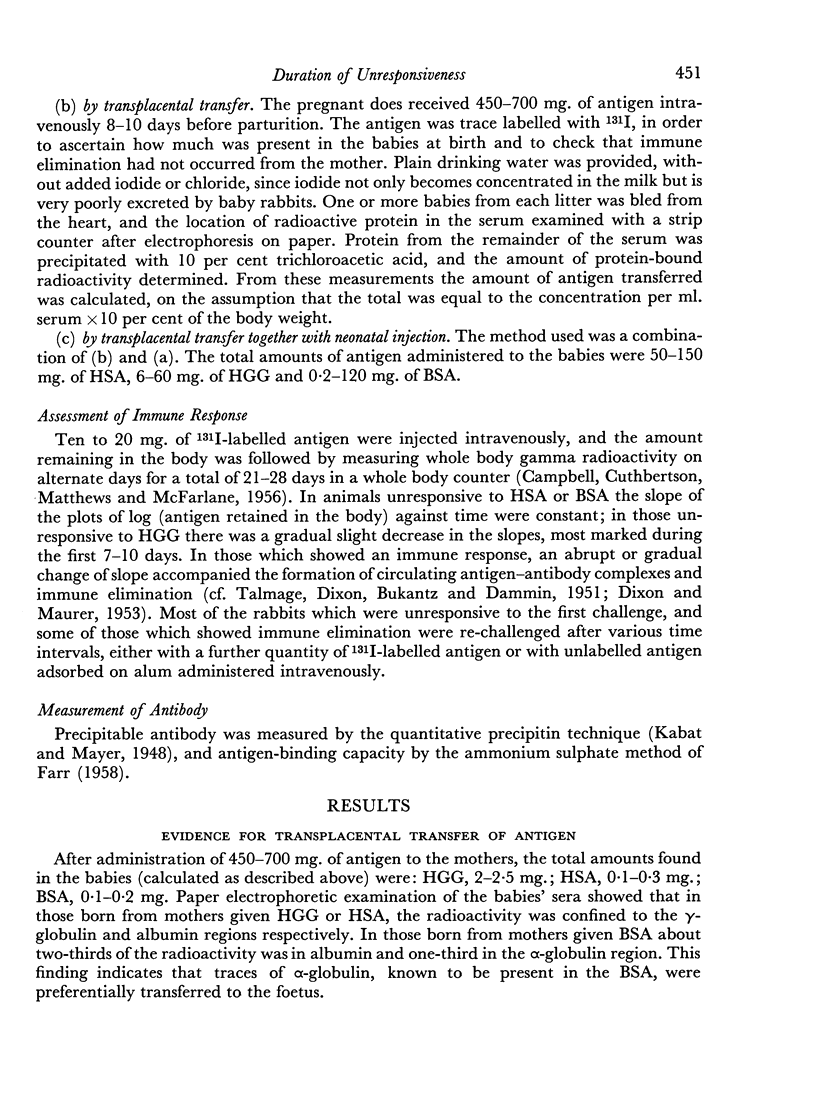
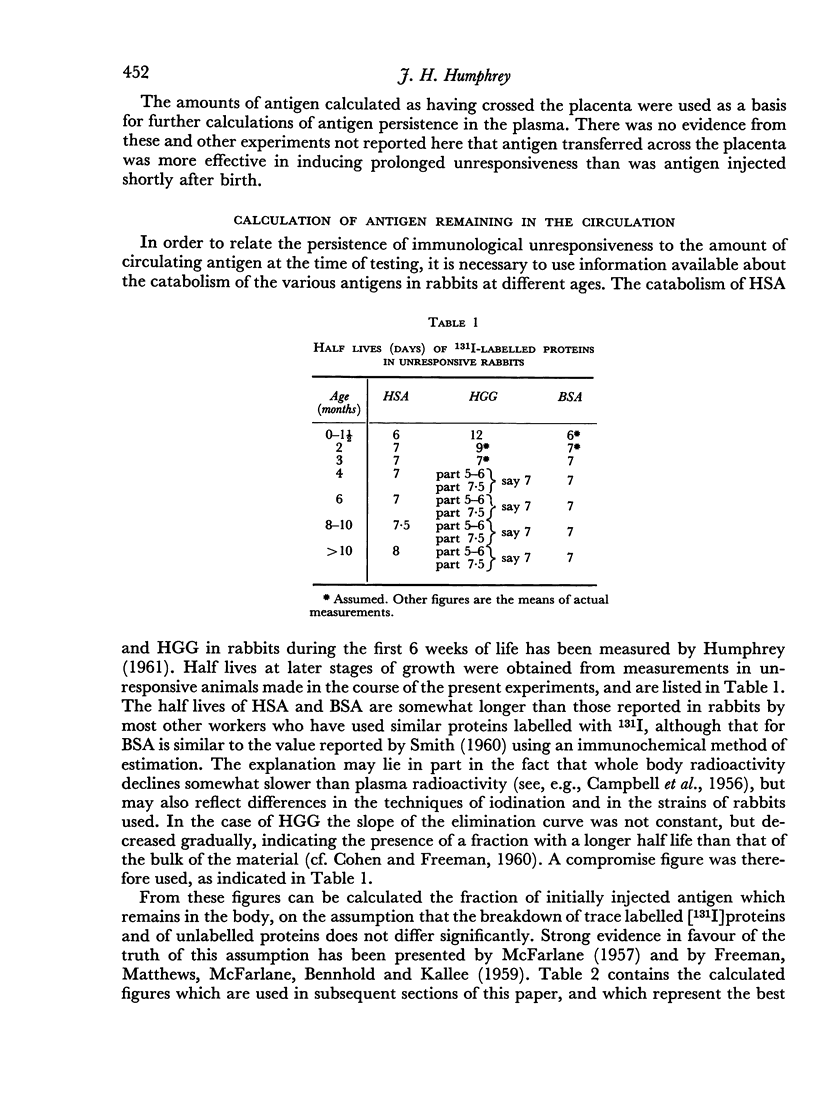
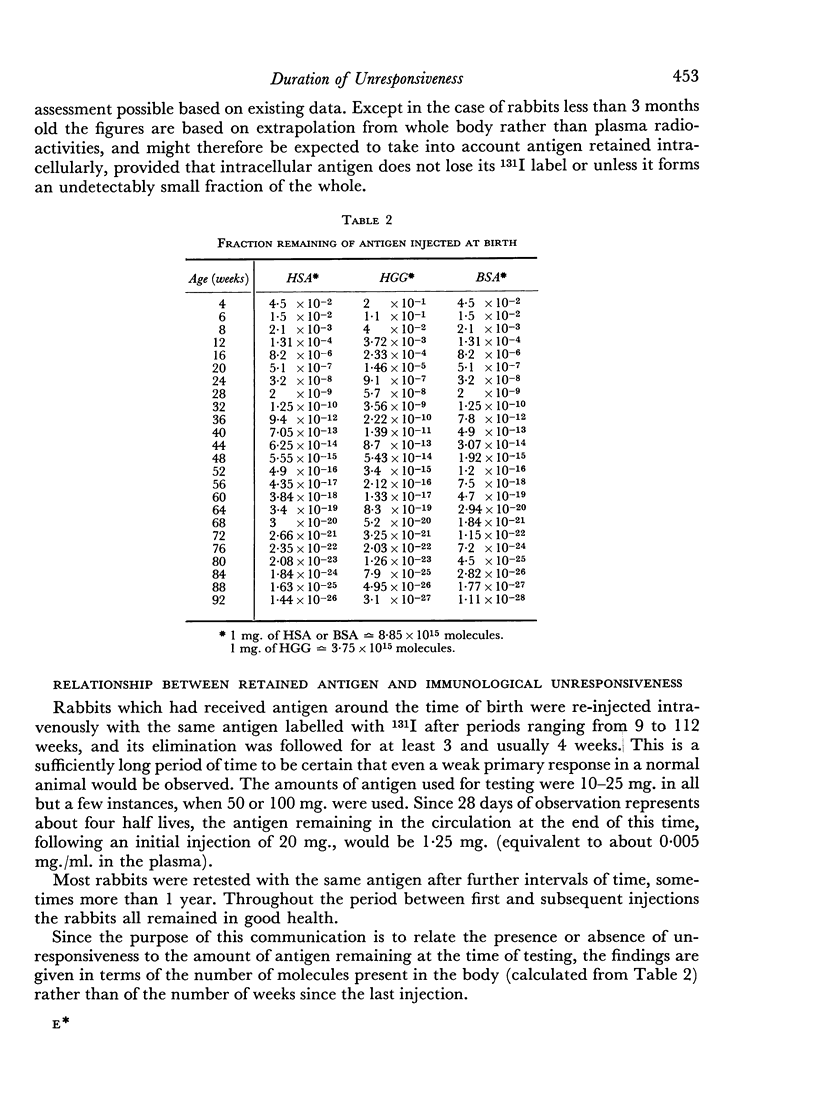
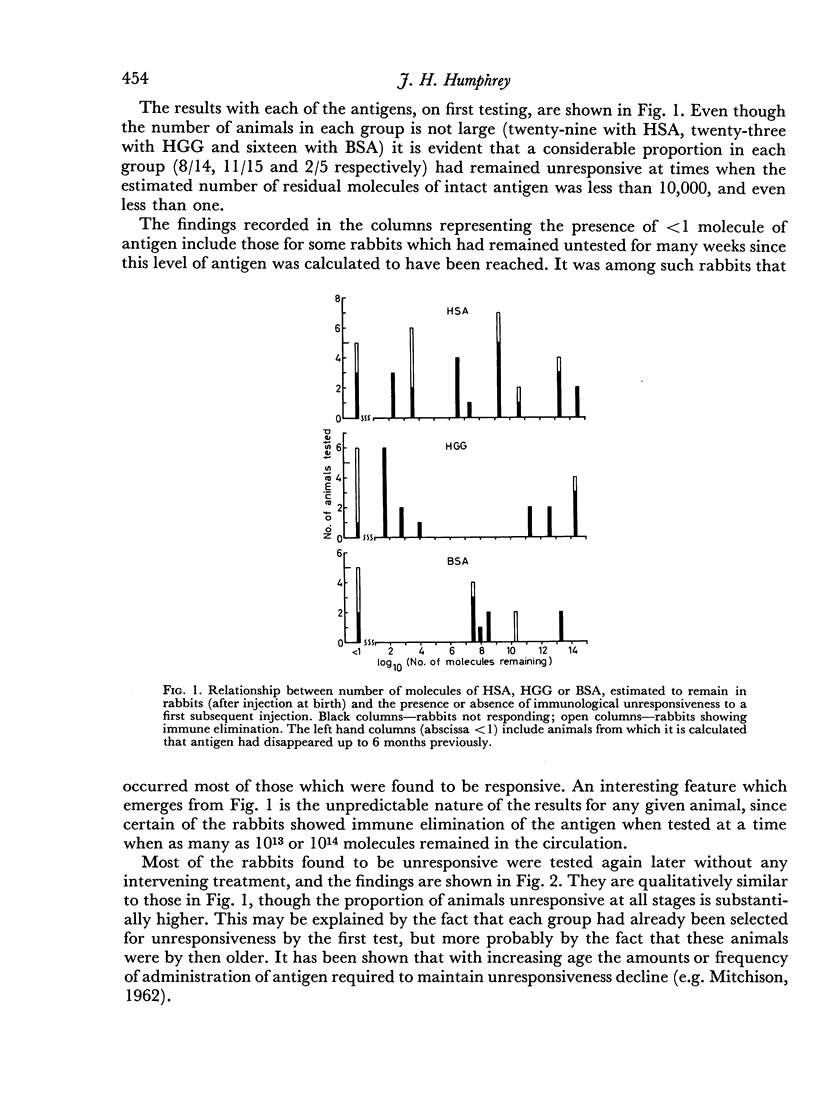
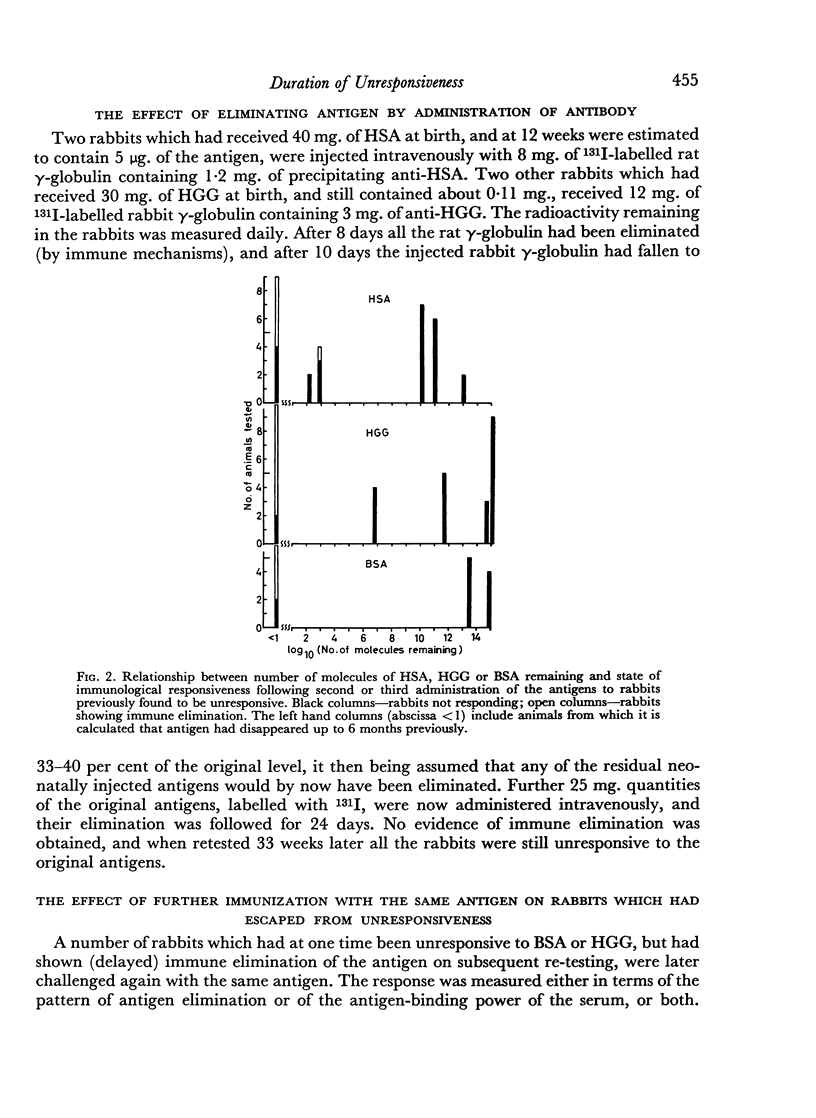
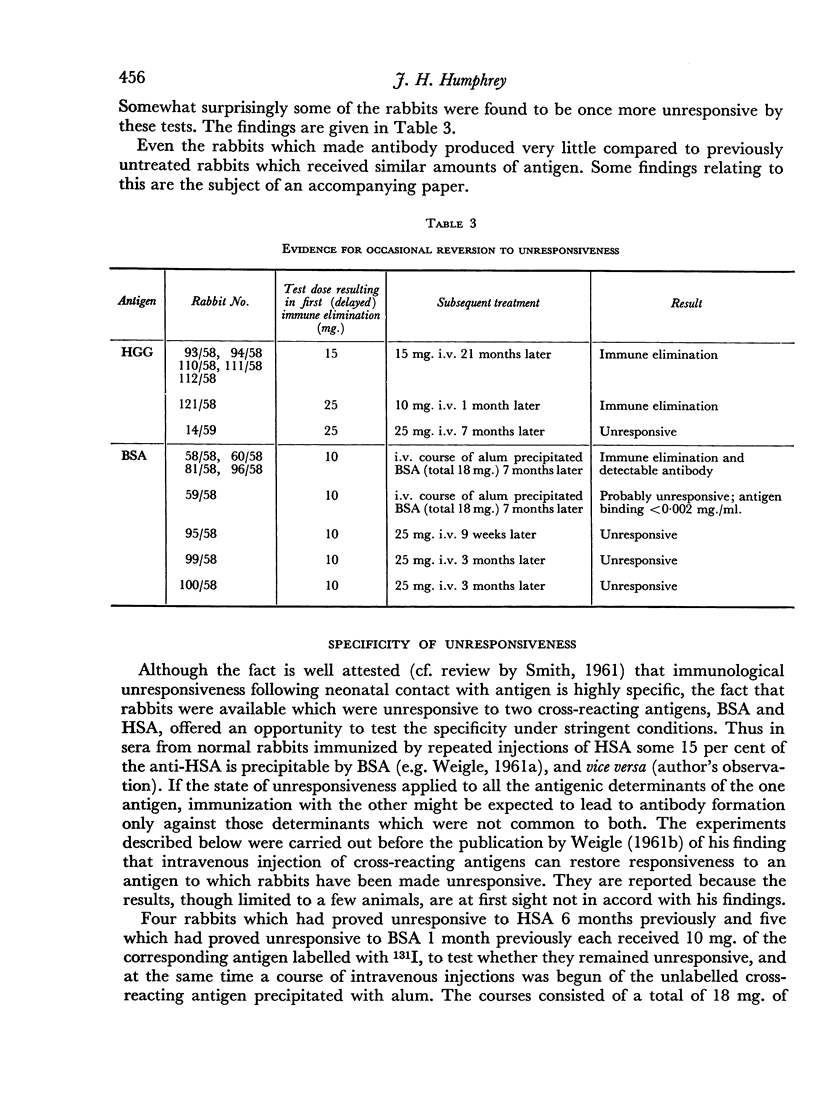
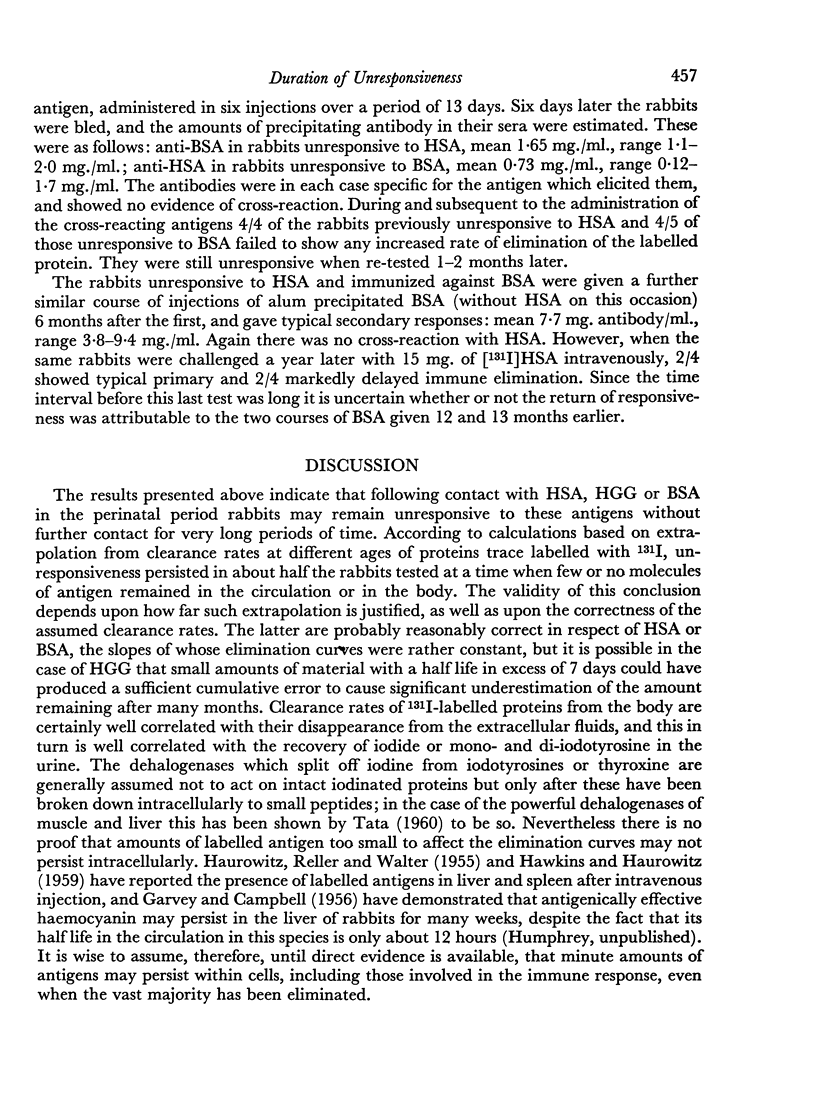
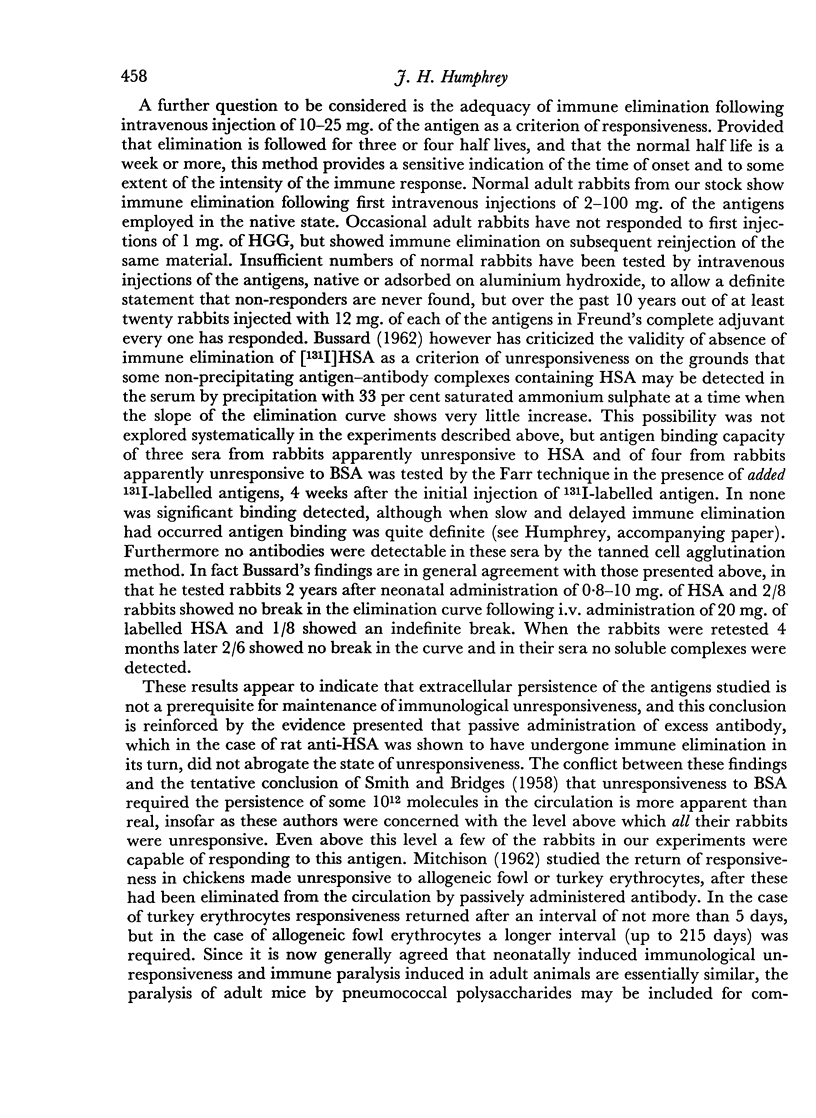
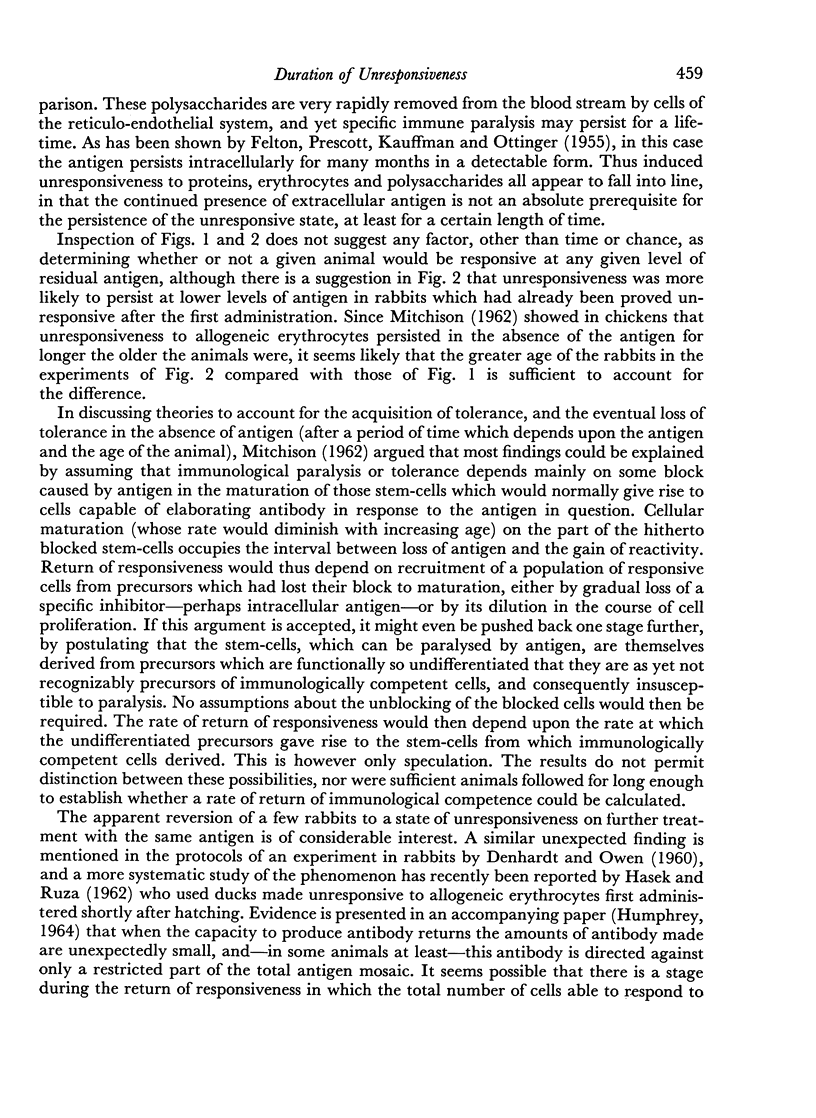
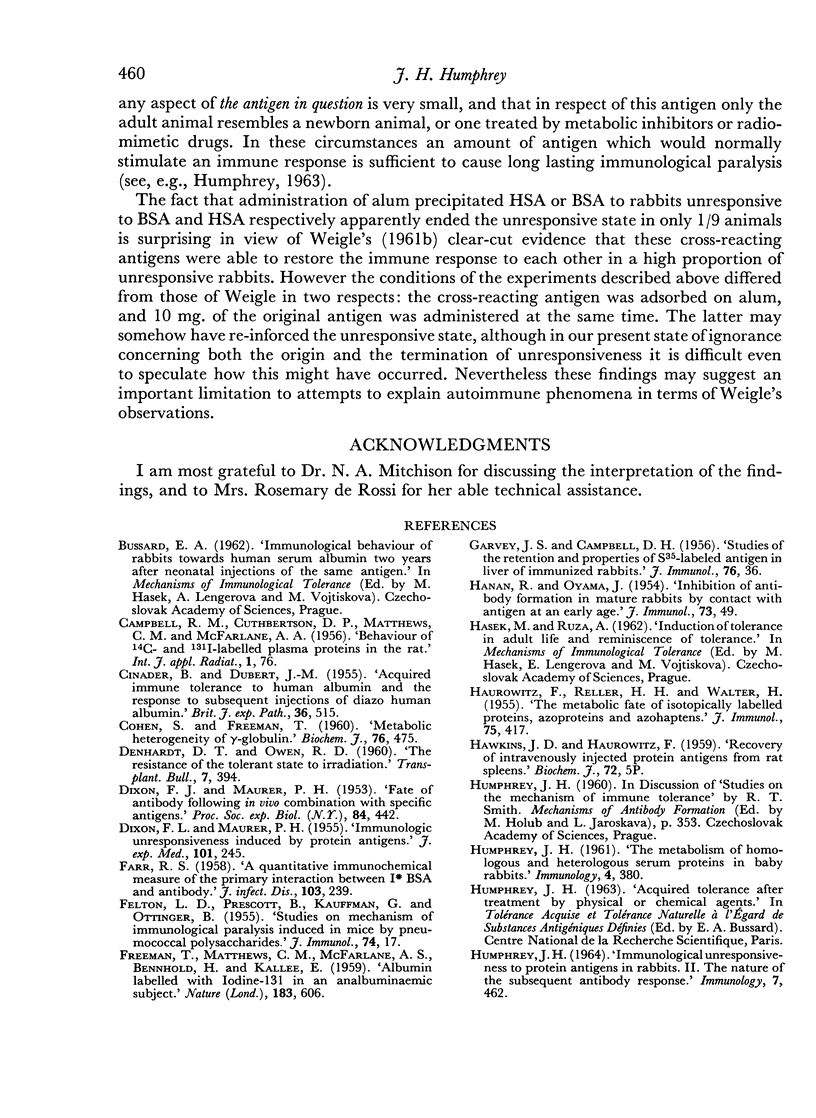
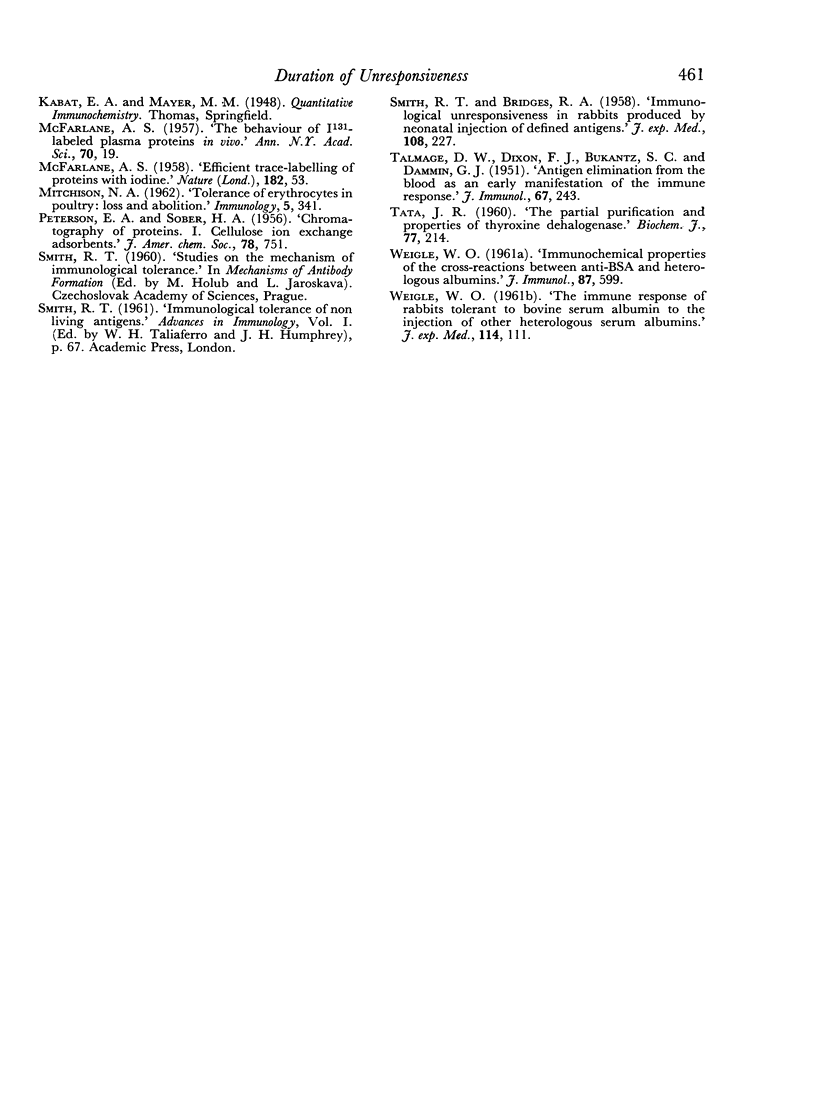
Selected References
These references are in PubMed. This may not be the complete list of references from this article.
- CINADER B., DUBERT J. M. Acquired immune tolerance to human albumin and the response to subsequent injections of diazo human albumin. Br J Exp Pathol. 1955 Oct;36(5):515–529. [PMC free article] [PubMed] [Google Scholar]
- COHEN S., FREEMAN T. Metabolic heterogeneity of human gamma-globulin. Biochem J. 1960 Sep;76:475–487. doi: 10.1042/bj0760475. [DOI] [PMC free article] [PubMed] [Google Scholar]
- DENHARDT D. T., OWEN R. D. The resistance of the tolerant state to x-irradiation. Transplant Bull. 1960 Apr;7:394–399. [PubMed] [Google Scholar]
- DIXON F. J., MAUER P. H. Immunologic unresponsiveness induced by protein antigens. J Exp Med. 1955 Mar 1;101(3):245–257. doi: 10.1084/jem.101.3.245. [DOI] [PMC free article] [PubMed] [Google Scholar]
- DIXON F. J., MAURER P. H. Fate of antibody following in vivo combination with specific antigen. Proc Soc Exp Biol Med. 1953 Nov;84(2):442–446. doi: 10.3181/00379727-84-20672. [DOI] [PubMed] [Google Scholar]
- FARR R. S. A quantitative immunochemical measure of the primary interaction between I BSA and antibody. J Infect Dis. 1958 Nov-Dec;103(3):239–262. doi: 10.1093/infdis/103.3.239. [DOI] [PubMed] [Google Scholar]
- FELTON L. D., KAUFFMANN G., PRESCOTT B., OTTINGER B. Studies on the mechanism of the immunological paralysis induced in mice by pneumococcal polysaccharides. J Immunol. 1955 Jan;74(1):17–26. [PubMed] [Google Scholar]
- FREEMAN T., MATTHEWS C. M., McFARLANE A. S., BENNHOLD H., KALLEE E. Albumin labelled with iodine-131 in an analbuminaemic subject. Nature. 1959 Feb 28;183(4661):606–606. doi: 10.1038/183606a0. [DOI] [PubMed] [Google Scholar]
- GARVEY J. S., CAMPBELL D. H. Studies of the retention and properties of S35 labeled antigen in livers of immunized rabbits. J Immunol. 1956 Jan;76(1):36–45. [PubMed] [Google Scholar]
- HANAN R., OYAMA J. Inhibition of antibody formation in mature rabbits by contact with the antigen at an early age. J Immunol. 1954 Jul;73(1):49–53. [PubMed] [Google Scholar]
- HAUROWITZ F., RELLER H. H., WALTER H. The metabolic fate of isotopically labelled proteins, azoproteins and azohaptens. J Immunol. 1955 Dec;75(6):417–422. [PubMed] [Google Scholar]
- HUMPHREY J. H. IMMUNOLOGICAL UNRESPONSIVENESS TO PROTEIN ANTIGENS IN RABBITS. II. THE NATURE OF THE SUBSEQUENT ANTIBODY RESPONSE. Immunology. 1964 Jul;7:462–473. [PMC free article] [PubMed] [Google Scholar]
- HUMPHREY J. H. The metabolism of homologous and heterologous serum proteins in baby rabbits. Immunology. 1961 Oct;4:380–387. [PMC free article] [PubMed] [Google Scholar]
- MITCHISON N. A. Tolerance of erythrocytes in poultry:induction and specificity. Immunology. 1962 May;5:341–358. [PMC free article] [PubMed] [Google Scholar]
- McFARLANE A. S. Efficient trace-labelling of proteins with iodine. Nature. 1958 Jul 5;182(4627):53–53. doi: 10.1038/182053a0. [DOI] [PubMed] [Google Scholar]
- SMITH R. T., BRIDGES R. A. Immunological unresponsiveness in rabbits produced by neonatal injection of defined antigens. J Exp Med. 1958 Aug 1;108(2):227–250. doi: 10.1084/jem.108.2.227. [DOI] [PMC free article] [PubMed] [Google Scholar]
- TATA J. R. The partial purification and properties of thyroxine dehalogenase. Biochem J. 1960 Nov;77:214–226. doi: 10.1042/bj0770214. [DOI] [PMC free article] [PubMed] [Google Scholar]
- WEIGLE W. O. Immunochemical properties of the cross-reactions between anti-BSA and heterologous albumins. J Immunol. 1961 Nov;87:599–607. [PubMed] [Google Scholar]


